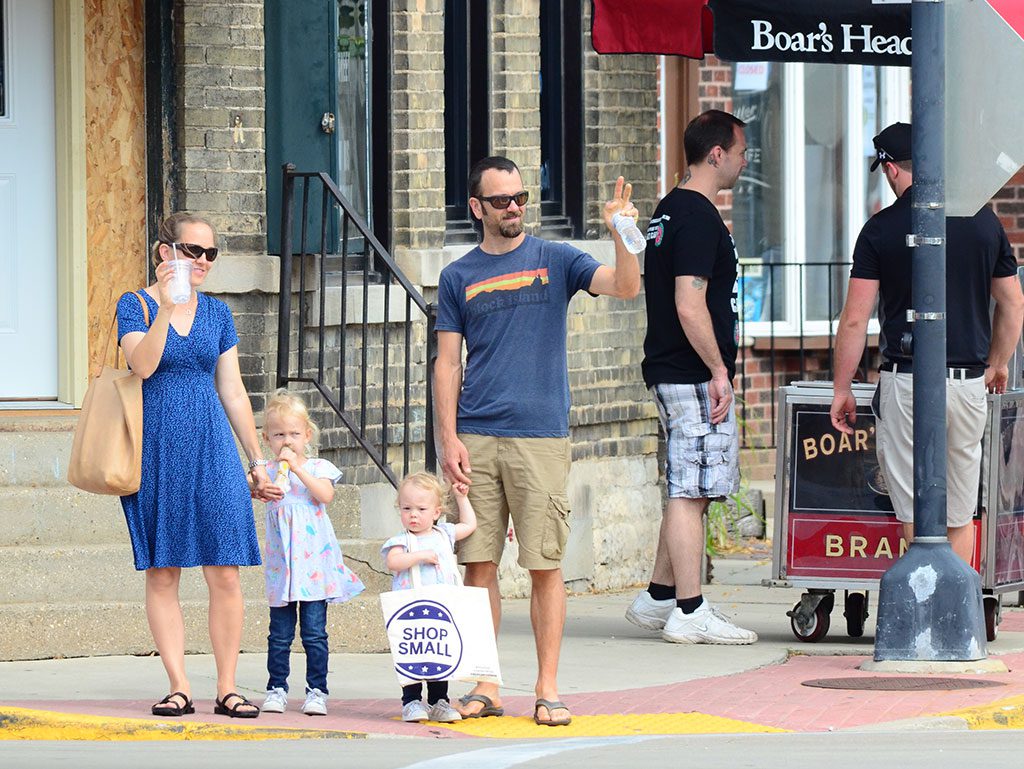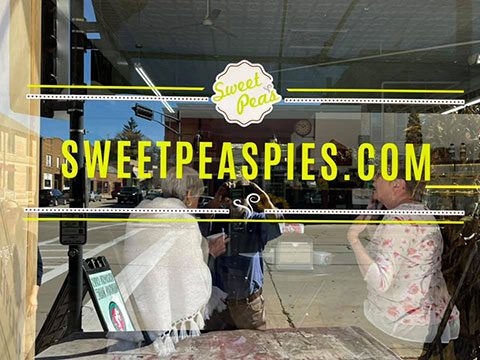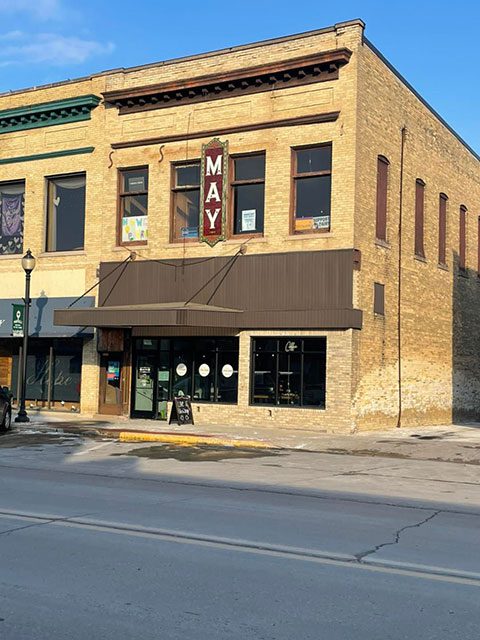
Mayville earned an award from the Mid-America Economic Development Council for its multifaceted placemaking efforts in collaboration with public and private sector partners.
The Dodge County community of Mayville is leveraging the power of partnership to engineer a compelling remake of its downtown, an effort that earned a prestigious placemaking award from the Mid-America Economic Development Council.
The award, presented in Chicago in December, recognized Mayville’s revitalization efforts as the city teamed up with WEDC, private developers, businesses, and other civic partners to transform underused spaces into vibrant community spaces.
Errin Welty, WEDC’s senior downtown development director, says fostering a sense of community identity and creating a place where people feel welcome is critical to a successful downtown revitalization.

Sweet Pea’s Pies opened on Main Street in Mayville with the help of a CDI Grant from WEDC.
“As a small community, Mayville understands that this unique sense of place is an important part of why people choose to visit or live in the community. Allowing visitors to the district to spend time, engage with others, and share experiences is what makes a place memorable,” she says.
Since 2018, when the historic riverfront community joined WEDC’s Wisconsin Main Street Program, its focus on restoring a unique sense of place has resulted in more than $2.8 million in private investment to renovate 15 district properties. Public-sector investment was also key to making the initiative work.
A façade improvement program was established, along with a revolving loan fund to support private investment. The community also incorporated bike and pedestrian trail improvements into road construction efforts, installed sculptural features on a brownfields site, and developed the Mayville Park Square as a downtown community plaza.
The effort also mobilized businesses and other civic groups. The local Rotary Club funded pedestrian bridge lighting, enhancements to Mayville Park Square, and kayak and bike rental programs. Businesses contributed to the community plaza projects and helped program events; five local restaurants created to-go food specials for patrons headed to events at the square.
“What we’re trying to do is turn Mayville into a destination for new businesses and travel enthusiasts,” says Dawn Gindt, manager of Mayville’s Main Street Program and Chamber of Commerce administrator. “We are a rural community. We have the same struggles everyone does in terms of funding. WEDC’s continued generous support has really helped us make great strides.”

A CDI Grant helped renovate this historic building into Open Door Coffeehouse, spaces for conferences, and community programming. The coffeehouse is operated by Mayville Open Door, a nonprofit organization designed to prevent crises by teaching life skills and providing mentoring programs.
For example, last July, WEDC provided Mayville with a $250,000 Community Development Investment Grant for the Albrecht School Apartments, a development that will create 20 apartments and commercial space in the iconic former Mayville High School downtown.
“Mayville has been bringing new life to its historic downtown by supporting small business owners, assisting renovation projects that create a picture-perfect, small-town scene, and offering events that give people a reason to visit,” said Missy Hughes, WEDC’s secretary and CEO.
View a video that showcases Mayville’s placemaking efforts.
A CDI Grant helped renovate this historic building into Open Door Coffeehouse, spaces for conferences, and community programming. The coffeehouse is operated by Mayville Open Door, a nonprofit organization designed to prevent crises by teaching life skills and providing mentoring programs.
Placemaking capitalizes on a local community’s assets and potential. It helps make communities more livable and attracts private and public investment.
Recognizing that, WEDC created the Vibrant Spaces grant program last year to help communities transform underused spaces into attractive hubs for community activities. The pilot program allows municipalities to apply for grants of between $25,000 and $50,000 to aid with local placemaking efforts.
“With the Vibrant Spaces program, we hope to encourage communities to reconsider how their public spaces are serving the community,” says Welty. “How can we better use our shared spaces to promote gathering, engagement, and activity in the heart of our community? Creating the opportunity to gather, participate in activities, and enjoy the space in a variety of ways supports community connections while boosting nearby local business traffic, creating a sense of vibrancy in the district.”
